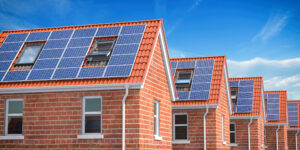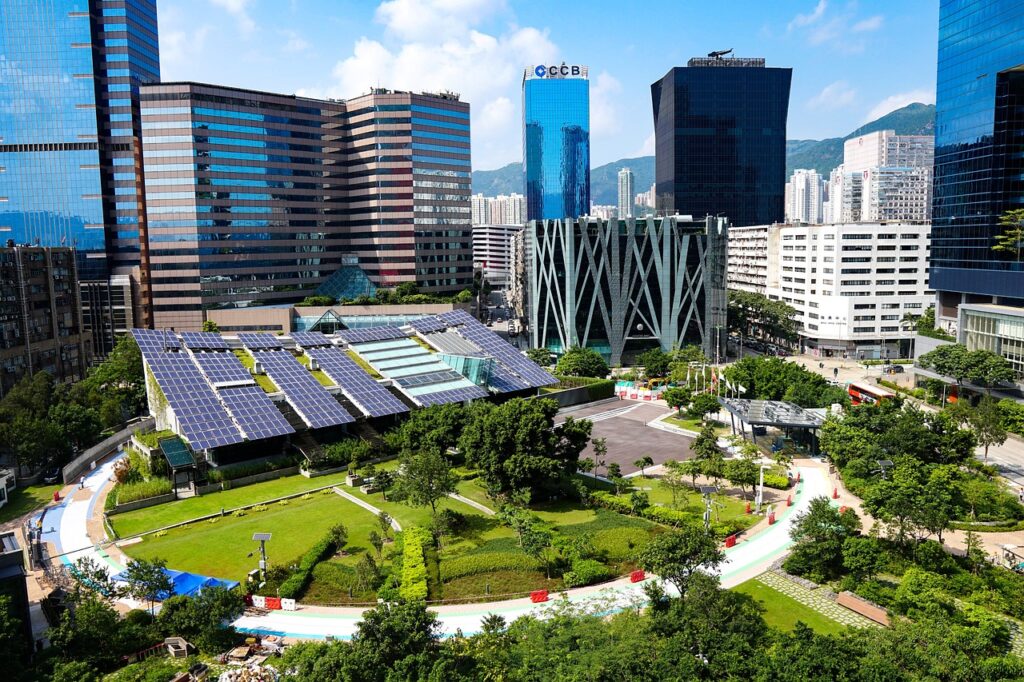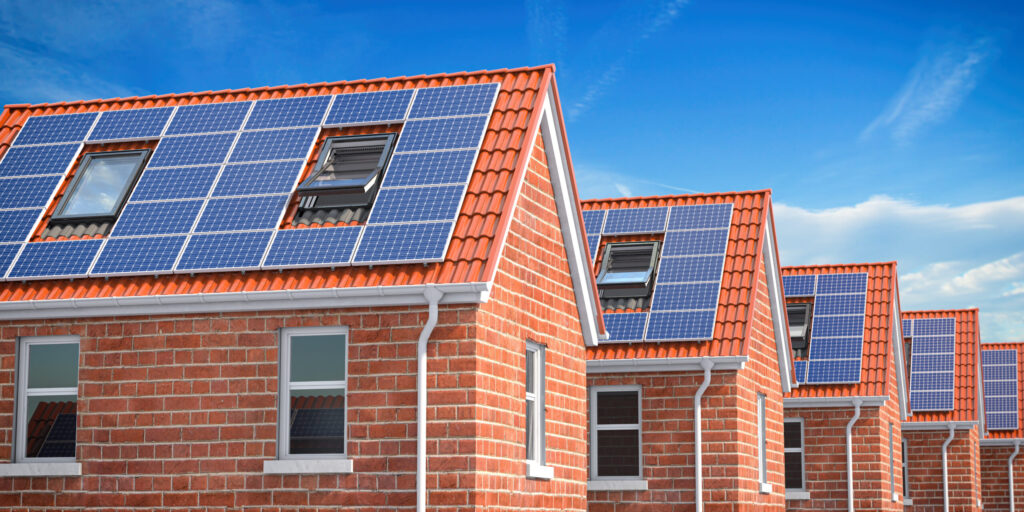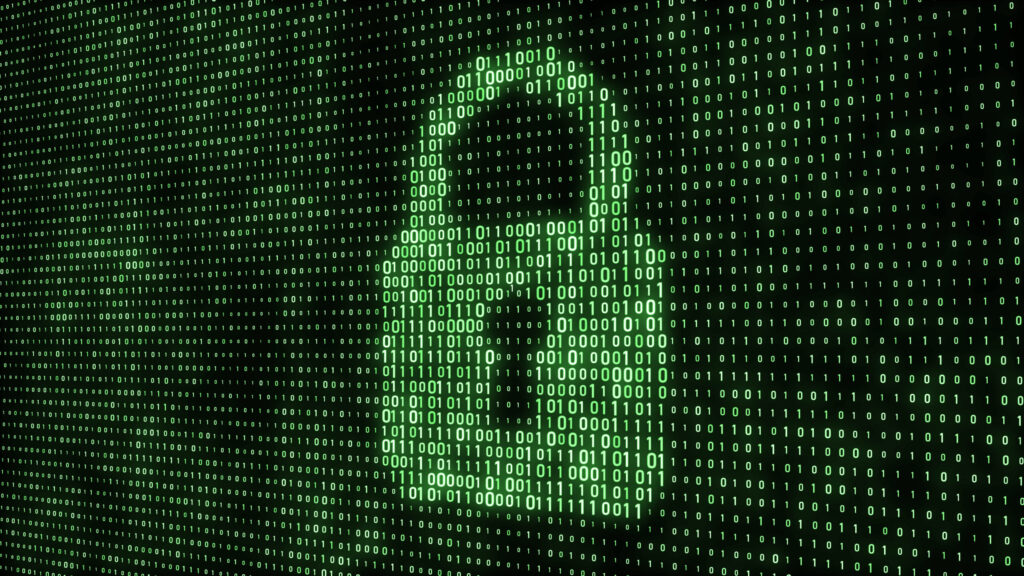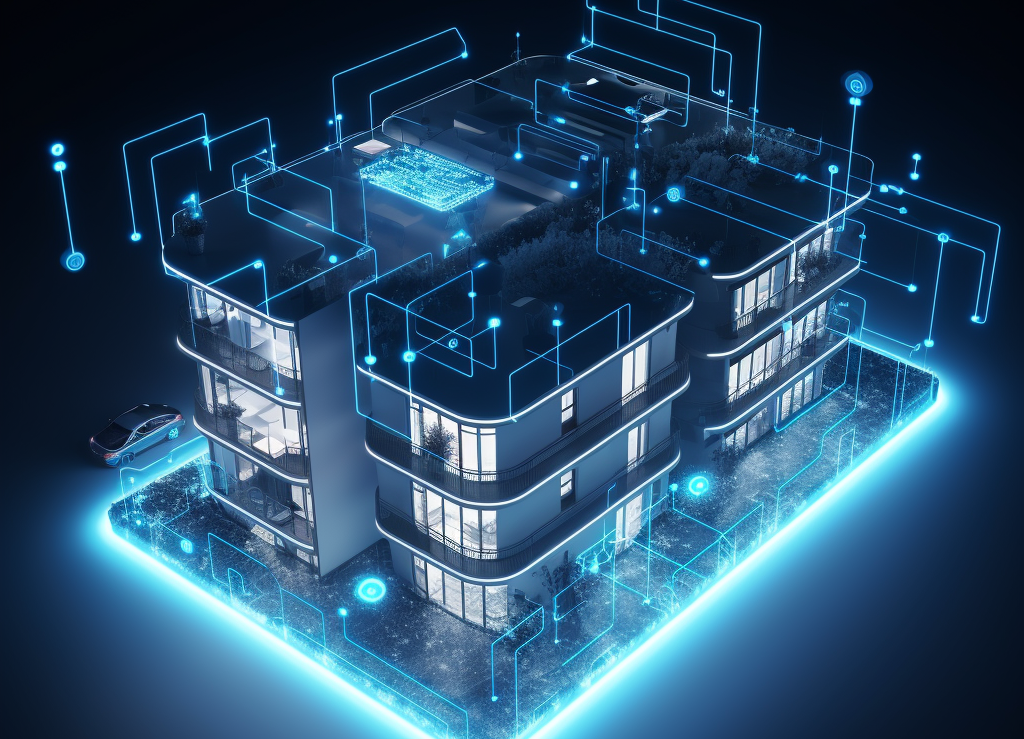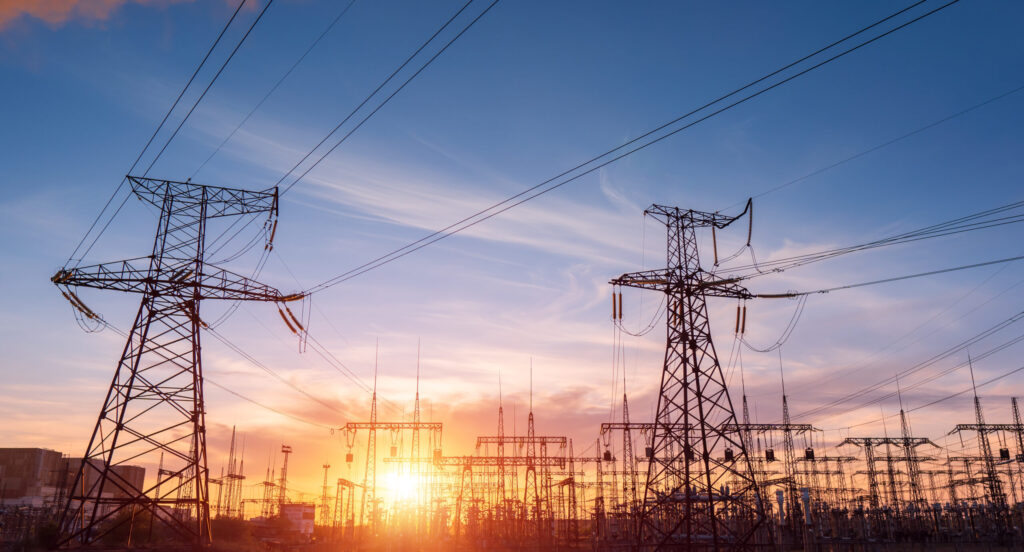The energy footprint of a building refers to the total amount of energy (electricity, water, gas) consumed for various purposes, such as heating, cooling, lighting, and operating appliances. Concerning multifamily buildings, the energy footprint is a complex subject that involves several layers of consideration.
Energy consumption patterns
Multifamily residential buildings often display unique energy consumption patterns that differ from single-family homes:
- Heating & Cooling: These typically account for the most significant portion of energy usage, with the need for consistent temperature control across multiple units.
- Lighting: Common areas such as hallways, lobbies, and parking structures require lighting which contributes to the overall energy consumption.
- Appliances: Using energy-consuming appliances like refrigerators, washing machines, and ovens is multiplied across various units, adding to the total energy footprint.
Key contributing factors to energy footprint
The architectural design, construction materials, and quality of construction play a vital role in energy efficiency. Poorly designed or constructed buildings may lead to significant energy loss. Older appliances and heating & cooling systems directly impact energy footprint. More energy-efficient options can substantially reduce the energy footprint. Residents’ daily habits and preferences, such as thermostat settings or usage of electronic devices, also contribute to the building’s overall energy consumption.
Understanding these factors is essential for anyone interested in reducing the energy footprint within the multifamily residential sector. By identifying where & when energy is most consumed and what influences this consumption, targeted strategies can be developed to make multifamily residences more energy efficient.
Strategies to reduce energy footprint
Reducing the energy footprint in multifamily residential buildings is not just a matter of responsibility towards the environment; it also translates to cost savings and enhances the quality of living. Several approaches can be tailored to suit different types of buildings and resident needs. This section outlines key strategies that can significantly impact energy conservation.
Energy-efficient building design
The design, materials used, and structure of a building can significantly influence its energy efficiency. Here are some ways to enhance it:
- Insulation: Proper insulation of walls, roofs, doors seals, and floors can prevent heat loss in winter and heat gain in summer, reducing the amount of energy needed for heating and cooling.
- Energy-Efficient Windows: Double-paned windows or those with energy-efficient coatings can minimize heat transfer and contribute to maintaining comfortable indoor temperatures.
- Strategic Orientation and Use of Natural Light: Designing buildings with windows facing south (in the Northern Hemisphere) can maximize natural sunlight, reducing the need for artificial lighting. Incorporating skylights and open floor plans can also enhance natural illumination. However, window blinds can also be utilized to help reduce radiant heat from the sun when the space is unused.
- Landscaping for Energy Conservation: Planting shade trees and creating windbreaks can help regulate the building’s temperature, reducing energy consumption for heating and cooling.
Implementing energy-efficient appliances and systems
The selection of appliances and systems can be pivotal in controlling energy consumption. Here’s how:
- Energy Star-Rated Appliances: These appliances meet government standards for energy efficiency and can significantly reduce energy usage.
- LED Lighting: Switching to LED lights, which consume less energy and last longer than traditional bulbs, can be a simple yet effective way to save energy.
- Smart Thermostats and Energy Management Systems: These technologies enable better control over heating and cooling, allowing residents to customize settings and optimize energy usage. This technology also helps property staff monitor and manage vacant unit heating & cooling usage throughout the year allowing the vacant units to remain at a consistent temperature while unoccupied.
Encouraging resident participation
Residents play a vital role in energy conservation, and their participation can be fostered through:
- Education and Awareness Programs: Regular workshops, information sessions, and communication about energy-saving practices can empower residents to make informed choices.
- Incentives for Energy-Saving Practices: Offering discounts or rewards for conserving energy can motivate residents to adopt energy-efficient habits.
- Community Initiatives Like Shared Solar Power: Encouraging the community to invest in shared renewable energy sources can create a collective sense of responsibility and contribute to long-term sustainability.
Regulatory compliance and incentives
Compliance with energy regulations and leveraging available incentives are critical to reducing the energy footprint in the multifamily residential industry. This section explores the key regulations, standards, and incentives that can guide and support the transition toward energy-efficient practices.
Overview of relevant regulations and standards
- Building Codes and Energy Standards: Many states have specific building codes and standards that mandate certain levels of energy efficiency. These may include requirements for insulation, HVAC systems, and more.
- Energy Labeling and Certification: Programs like ENERGY STAR and LEED (Leadership in Energy and Environmental Design) certify buildings meeting defined energy efficiency criteria. Such certifications can add value to the property and attract environmentally conscious residents.
- Mandatory Energy Audits and Benchmarking: Some jurisdictions require energy audits and benchmarking for multifamily residential buildings. This helps in identifying areas for improvement and tracking progress over time.
Available government incentives and grants for energy efficiency improvements
- Tax Credits and Rebates: Governments often offer tax credits, rebates, or deductions for implementing energy-efficient measures. This can include installing energy-efficient appliances, windows, insulation, and renewable energy systems like solar panels.
- Low-Interest Financing and Grants: Various programs provide low-interest financing or grants to property owners and managers for making energy efficiency upgrades. These financial incentives can significantly reduce the initial costs of improvements.
- Utility Incentives: Many utility companies offer incentives for energy conservation, such as discounts or rebates on energy-efficient appliances, and some offer renewable energy buyback if solar panels produce more electricity than is used.
Conclusion
The total overall energy footprint of a multifamily property is a result of the combined actions of the builder, owner, manager, and residents. By leveraging the insights from this article and strategies that companies like EnergyServ Solutions can provide; you will have an increased understanding of the challenges, available solutions, and knowledge of the incentives available in your area to help reduce your overall energy footprint and expenditures.

